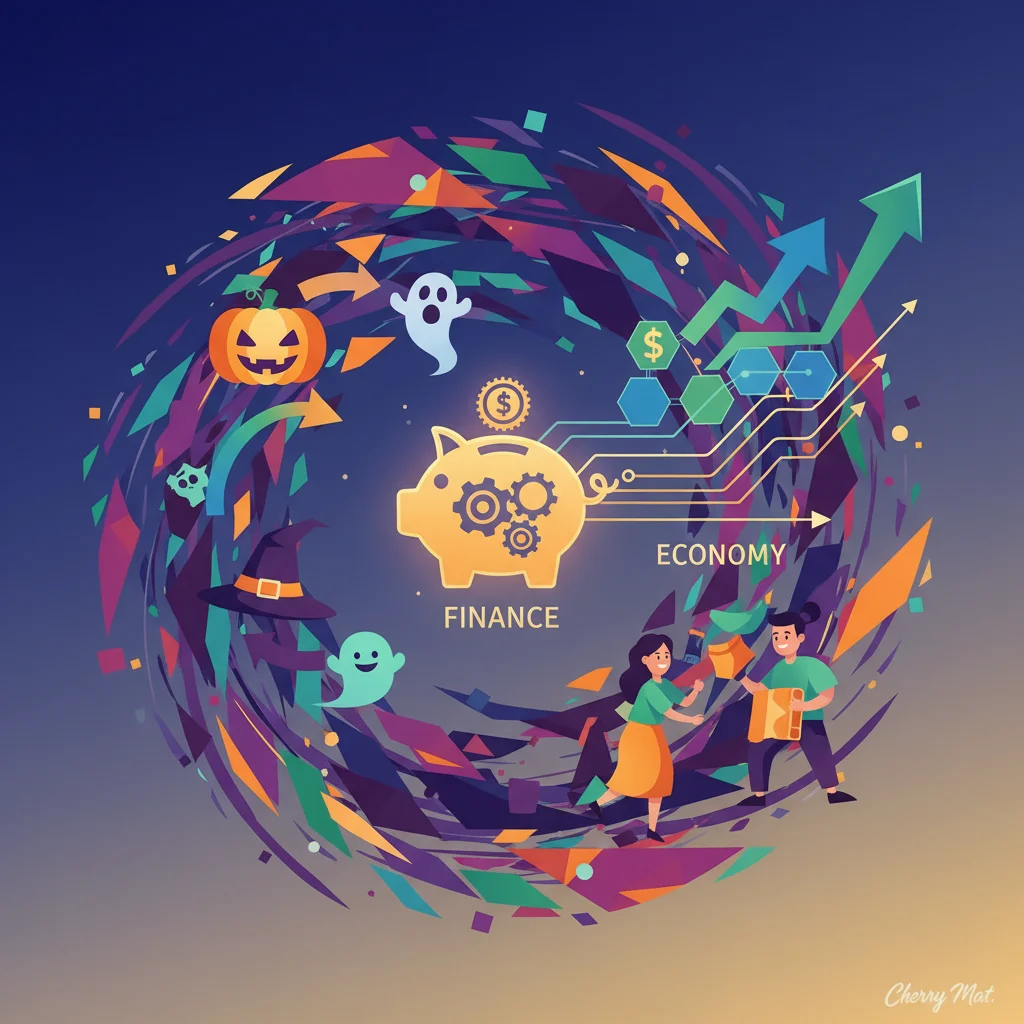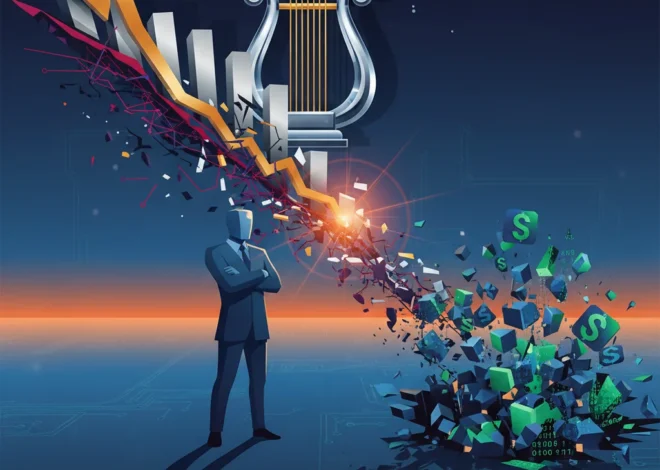
The Halloween Indicator: What a Local Costume Swap Reveals About the Future of Finance and the Economy
On the surface, it’s a heartwarming community story. In a small town, residents organize a Halloween costume swap-shop to help families manage the rising costs of the annual festivity. As Cherry Matthews, an organizer, noted, the goal is simply to make the celebration “less expensive” for everyone involved (source). For most, the story ends there—a pleasant footnote in a local news cycle. For the astute investor, business leader, or financial analyst, however, this is not a footnote. It is a headline.
This simple act of swapping a superhero cape for a witch’s hat is a powerful micro-indicator, a signal flare illuminating some of the most profound shifts occurring in our global economy. It speaks volumes about consumer behavior under inflationary pressure, the burgeoning circular economy, and the disruptive potential of peer-to-peer models that are being supercharged by financial technology. This single swap-shop is a microcosm of a much larger economic transformation, and understanding its underpinnings is crucial for anyone navigating the complex worlds of finance, investing, and technology today.
In this analysis, we will deconstruct this seemingly simple event to reveal its deeper connections to macroeconomic trends, sustainable investing, the future of retail, and the innovative frontiers of fintech and blockchain. We will explore how this grassroots response to economic hardship is not an anomaly, but a preview of a more resourceful, connected, and technologically integrated economic future.
The Macroeconomic Ghost in the Machine: Consumer Behavior as a Leading Indicator
The very existence of a costume swap-shop is a direct response to a challenging macroeconomic environment. For years, Halloween has been a juggernaut of consumer spending. In 2023, total Halloween spending in the United States was projected to reach a record $12.2 billion, with the average person spending over $108 on costumes, candy, and decorations, according to the National Retail Federation (source). This data point, viewed in isolation, suggests a robust and confident consumer.
However, the swap-shop tells a different, more nuanced story. It reveals the strain beneath the surface. Persistent inflation, rising interest rates, and stagnant real-wage growth are forcing households to make difficult choices. The decision to swap rather than buy is a clear signal of consumer belt-tightening and a strategic reallocation of discretionary funds. This is not just about saving a few dollars; it’s a fundamental shift in the consumer psyche from aspirational purchasing to practical resourcefulness. For professionals in economics and finance, these grassroots behavioral shifts are often more predictive of future economic trends than top-line retail sales data. They signal a potential downturn in consumer confidence long before it appears in official sentiment surveys.
This pressure on household finance has direct implications for the stock market. Companies heavily reliant on high-volume, low-margin seasonal sales may face significant headwinds. Investors should be scrutinizing retail sector earnings reports not just for total revenue, but for shifts in product mix, margin compression, and inventory levels. The success of a local swap-shop is a qualitative data point that suggests rising consumer price sensitivity, which could spell trouble for brands that have relied on price inelasticity.
The Air Fryer Economy: Why Free Tools Are Worthless Without Financial Literacy
From Swap-Shop to Stock Portfolio: The Circular Economy as an Investment Thesis
The Halloween swap is a perfect, small-scale example of the circular economy in action. This model, which emphasizes sharing, leasing, reusing, repairing, and recycling existing materials and products for as long as possible, is a direct challenge to the traditional linear economic model of “take-make-dispose.” While the environmental benefits are clear, the investment and financial implications are equally profound.
The circular economy is rapidly moving from a niche concept to a multi-trillion-dollar economic opportunity. According to research by Accenture, the circular economy could generate $4.5 trillion in new economic output by 2030 (source). This growth is being driven by resource scarcity, regulatory pressure, and a powerful shift in consumer preference towards sustainability. For investors, this represents a paradigm shift, creating new classes of winners and losers.
Below is a comparison of the traditional linear model versus the emerging circular model, highlighting the financial and strategic differences:
| Metric | Linear Consumption Model (Traditional Retail) | Circular Economy Model (Swap/Resale Platforms) |
|---|---|---|
| Core Business | High-volume new product sales | Facilitating access, resale, and rental; service-based |
| Revenue Streams | One-time product margin | Transaction fees, subscriptions, service charges, data analytics |
| Asset Risk | High inventory risk, obsolescence, markdowns | Platform-based model; lower physical asset risk |
| Customer Relationship | Transactional, focused on next purchase | Community-based, high engagement, long-term value |
| ESG Profile | High resource consumption, waste generation | Low environmental footprint, promotes social equity |
This table illustrates why the circular model is so disruptive. It transforms the fundamental economics of consumption. Companies like The RealReal (luxury consignment), Vinted (fast fashion resale), and Rent the Runway (apparel rental) are the vanguard of this movement. Investing in this space is no longer just an ESG play; it’s a strategic bet on a more efficient, resilient, and technologically enabled model of commerce.
The Budapest Gambit: How a Potential Trump-Putin Summit Could Reshape Global Markets
The Digital Ghost: How Fintech and Blockchain Can Scale the Swap-Shop
A physical swap-shop is limited by geography and scale. However, the underlying principle—unlocking the latent value in underutilized assets—is a perfect use case for financial technology. The next evolution of this concept will be digital, global, and powered by sophisticated fintech platforms and, potentially, blockchain technology.
Imagine a “Global Halloween Swap” application. This is where fintech comes in. Such a platform would require:
- Digital Wallets & P2P Payments: Seamless, low-cost transactions for rentals, deposits, and swaps, bypassing traditional banking infrastructure.
- Micro-Insurance: On-demand insurance products to cover damage or loss of a swapped item, underwritten and priced algorithmically.
- Algorithmic Trust Scoring: Sophisticated systems to verify user identity and create reputation scores, solving the critical trust issue in P2P exchanges.
- Integrated Logistics: Partnerships with logistics providers to create a frictionless shipping and return process, managed entirely within the app.
This is a clear challenge and opportunity for the banking and financial services industry. The institutions that can provide the embedded finance infrastructure—the APIs for payments, lending, and insurance—for this burgeoning peer-to-peer economy will be the winners.
Taking this a step further, blockchain technology could provide the ultimate trust layer for a decentralized physical asset marketplace. Here’s how:
- Non-Fungible Tokens (NFTs) for Physical Assets: A unique digital token (NFT) could be created to represent a physical costume. This token would contain the item’s history, condition, and ownership record.
- Decentralized Identity: Users could control their own identity and reputation data on the blockchain, carrying it across different P2P platforms without being locked into a single ecosystem.
– Smart Contracts for Escrow: Trading or renting the costume would involve a transaction of the NFT via a smart contract. The smart contract could automatically hold a deposit in escrow and release it upon verified return of the item, automating the entire process and eliminating the need for a central intermediary.
While the application of blockchain to a Halloween costume may seem like overkill, it serves as a powerful proof-of-concept for the tokenization of all real-world assets. The same technology used for trading a Batman costume could be used for trading fractional ownership in a classic car, a piece of art, or industrial equipment. This is the long-term, disruptive vision that begins with a simple, practical need identified in a community swap-shop.
Implications for the Modern Portfolio and the Future of Economics
The humble Halloween costume swap is a harbinger of change, with clear takeaways for financial professionals.
For the investor, it highlights the need to look beyond traditional retail and identify the enablers of the circular and sharing economies. This includes technology platforms, logistics companies, and fintech firms providing the picks and shovels for this new gold rush. It also serves as a warning about the fragility of business models built on linear consumption in an era of economic pressure and heightened environmental awareness.
For the stock market analyst, it underscores the importance of tracking non-traditional data sources to gauge consumer sentiment and behavior. The conversation in a local community forum can be a more potent leading indicator than a government-issued economic report.
For the banking and financial technology executive, it reveals a massive, underserved market. The P2P economy requires a new suite of financial products: micro-transactions, embedded insurance, digital escrow, and identity verification. The future of banking lies in becoming the invisible, trusted infrastructure that powers these billions of daily exchanges.
Ultimately, the story of the Halloween swap-shop is a powerful reminder that the most significant economic trends often start small. They begin not in corporate boardrooms or central bank meetings, but in community halls and online forums, born out of necessity and ingenuity. By learning to recognize and analyze these micro-signals, we can better understand the monumental shifts reshaping our economy and position ourselves for the future of finance.
The Maverick and the Megabank: Inside the Landmark Deal Redefining Japanese Finance


